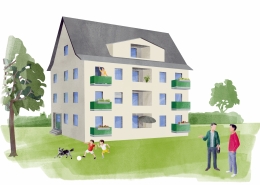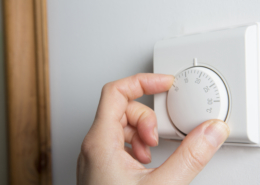Safely through the winter with the Energy Saving Alliance
No Christmas lights, wool blankets for the hairdresser's customers or postponing the annual inspection in an industrial plant. Companies and organizations in Switzerland contribute to saving energy in a wide variety of ways. 150 representatives from business, civil society and the public sector have joined forces in the Energy Saving Alliance.
The companies take these measures voluntarily. In doing so, they support efforts to ensure security of supply in winter. Energeiaplus shows examples of where companies are pulling the lever.
In industry, for example:
Cement production is particularly energy-intensive. Cement manufacturer Holcim stops operations at its three cement plants during the critical winter period for the annual overhaul. The overhaul lasts four weeks at a time. Normally, it takes place in spring and fall. The move to winter is expected to save up to 20 percent of the electricity previously consumed. Because the warehouses are working at maximum capacity, Holcim can still supply sufficient cement, and it is ensured that important infrastructure projects are not delayed.
Steel Gerlafingen has been converting its lighting to LED since 2020. In summer 2022, a further 200 LED lamps were installed. Contract negotiations are currently underway for an additional 300 to be installed between January and March 2023. The LEDs installed in the summer of 2022 will result in electricity savings of 150 MWh/year. Together with the 460 LEDs already installed in 2021 and the additional ones to be installed in 2023, the total electricity savings at the end of the program will be 2000 MWh/year.
The automation and digitization company Siemens will switch off the approximately 80 digital information screens throughout Switzerland. Furthermore, the non-safety-related night lighting in buildings and parking garages, including Siemens logos, will be discontinued or the operating times shortened. In this way, Siemens aims to save 10 percent electricity at its owned locations. Further measures relate to heating and ventilation. The aim is to reduce gas consumption by 20 percent.
In the hospital, for example:
The University Hospital of Geneva wants to save on lighting. Where not necessary, the lighting is switched off. the Geneva hospital wants to save 30 percent electricity in this way. Equipment and devices that are not needed will be switched off. In addition, the room temperature will be reduced to 20 degrees, with the exception of the patient area. The measures are intended to affect the quality and safety of care. The hospital is aiming for savings of up to 15 percent in electricity consumption.
For example, in the shopping center:
This year, the Mall of Switzerland is doing without Christmas lighting in the outdoor area. In the indoor area, the decorations and lighting will also only be in use on a minimal basis. Instead of a real ice rink as in previous years, the Mall of Switzerland will set up an artificial ice rink. By dispensing with a field of real ice and reducing the lighting, around 70 percent of the energy required during the Christmas period is to be saved.
For example, in the hairdressing salon:
Even small businesses still see potential for savings and also resort to unconventional measures: The Lucerne hair salon Haarkult lowers the room temperature to 20 degrees and distributes wool blankets to customers if they find it too cold. All water taps are fitted with economy nozzles, and employees are urged to use water sparingly when washing their hair. They are also told to clean out dye trays with household paper to use less water. In addition, Haarkult has switched completely to LEDs, and the shop windows remain dark. Employees should only use the hairdryer for necessary and required drying processes and always turn it off when new sections of hair are being cut.
And in sports:
From now on, the Zug ice hockey club will only operate the video cube in the ice stadium during home games and will switch it off completely when not in use, so that it does not continue to run in standby mode. The video cube requires about 400 kWh of electricity per day, or about 16 kWh per hour. In the 2021/22 season, this makes a total of 140'000 kWh . EV Zug expects that the electricity demand will be reduced by 135'000 kWh or 96%.
 BFE
BFE
 Eier kochen mit der Ogi-Methode
Eier kochen mit der Ogi-Methode  renovabene.chEnergetische Sanierung von Miethäusern: Neue Ratgeber liefern Antworten auf zentrale Fragen
renovabene.chEnergetische Sanierung von Miethäusern: Neue Ratgeber liefern Antworten auf zentrale Fragen  BFELe chiffre: 71,9 milliards de kWh d’électricité produits en 2019
BFELe chiffre: 71,9 milliards de kWh d’électricité produits en 2019  ShutterstockNe gaspillons pas de l'électricité avec des chauffages électriques peu efficaces
ShutterstockNe gaspillons pas de l'électricité avec des chauffages électriques peu efficaces 
 shutterstock
shutterstock Vogel
Vogel
Neuste Kommentare